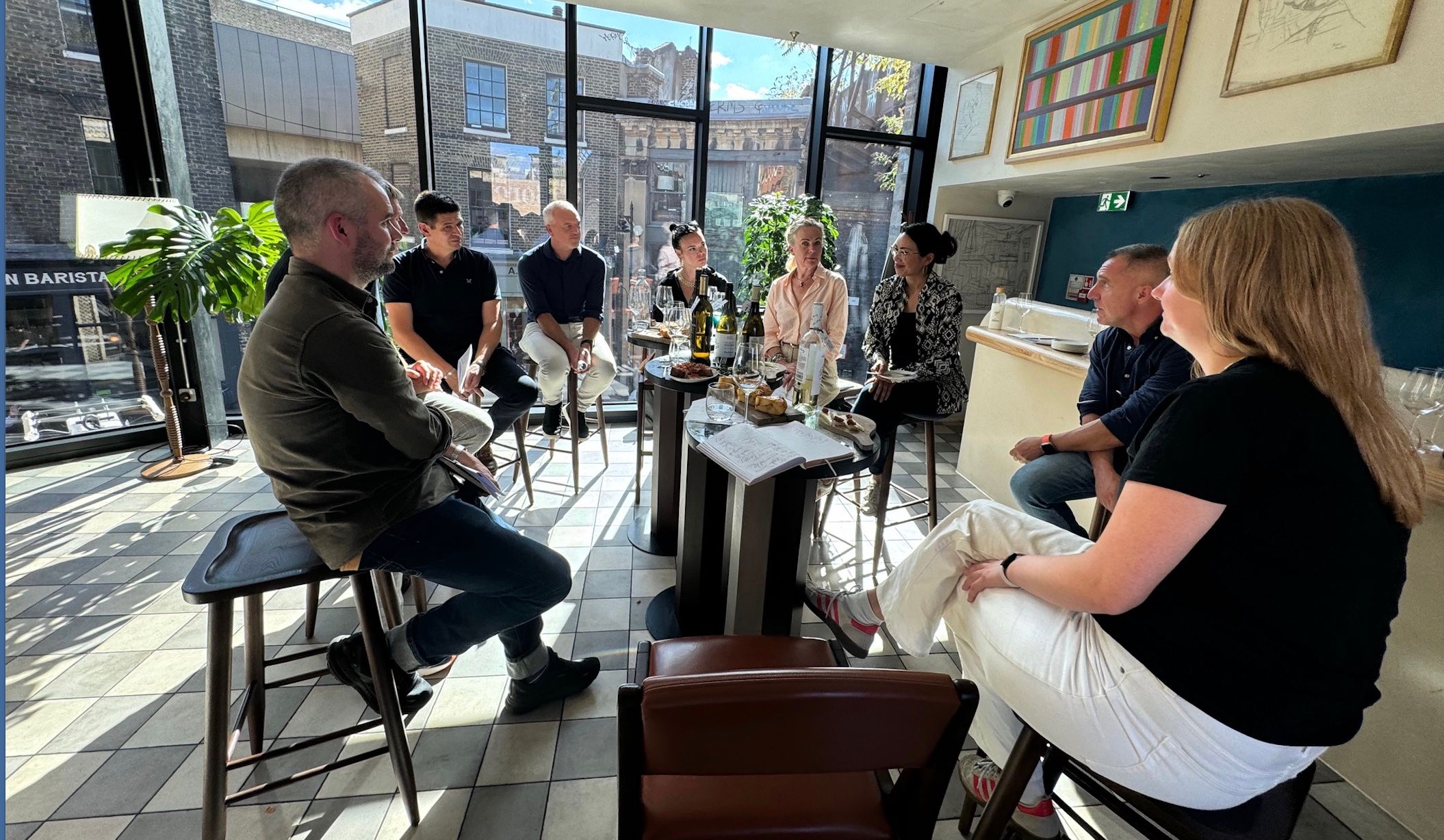“There are premium white wines. Then there are Rías Baixas premium white wines.” Now before Marks & Spencer unleashes its lawyers, that’s not actually a marketing slogan for the region, but it very much sums up the mood from the panel of leading UK trade buyers and commentators who took part in The Buyer’s recent debate with DO Rías Baixas to analyse where its wines stand in the UK wine market now and in the future.
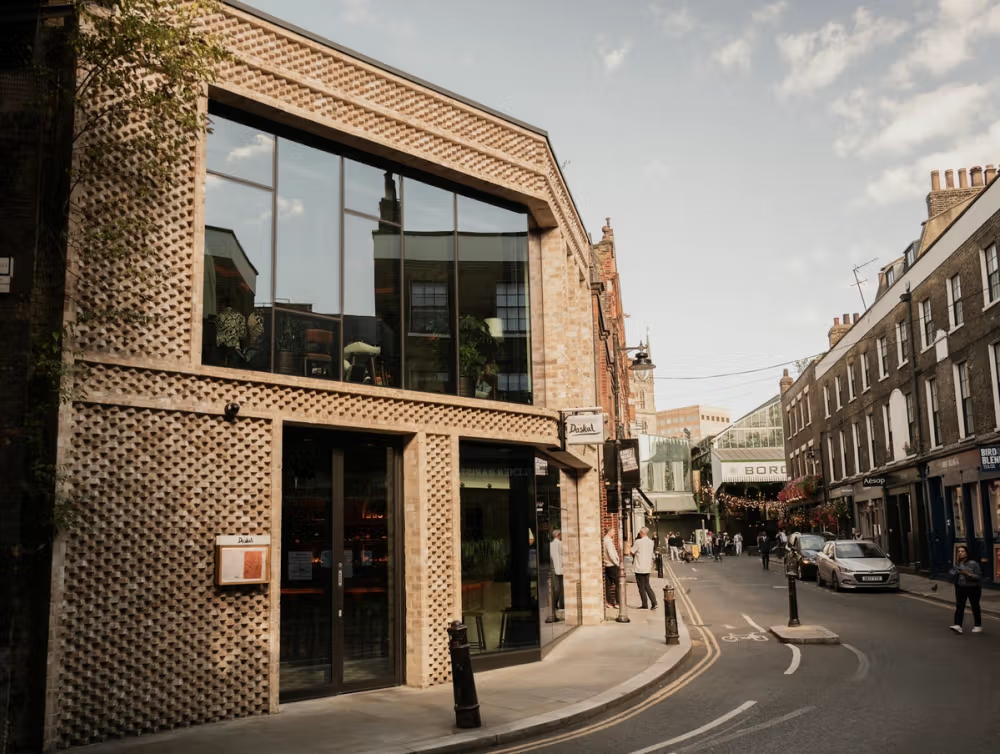
Bar Daskal, the premium Spanish wine bar from the Harts Group in London's Borough Market was the appropriate setting for the debate
They had been invited to take part in a wide-ranging tasting and debate - held appropriately at Bar Daskal in London’s Borough Market, part of the premium Barrafina Spanish restaurant group - and assess what potential there is for the various styles of Albariño that dominate its wine production accounting for close to 99% of its annual production.
Not that Albariño is in any way new to the UK, or its other major export markets, where it has become one of the go to grape varieties for trade and consumer buyers looking for fresh, saline, easy drinking, food friendly wines to drink.
The challenge and opportunity for Rías Baixas, and its producers, is how it builds on its already strong platform and further enhances its credentials as one of the world’s finest white wine regions. A region capable of making wines, as one winemaker told the Susie & Peter podcast, Wine Blast, that can take you “from the swimming pool to the Michelin-starred restaurant”.
To help analyse its potential was our trade panel including:

- Peter Mitchell MW, wine director at Jeroboams.

- Ophelia Hirst, assistant buyer and logistics at Lea & Sandeman.

- Libby Brodie, wine writer, broadcaster, columnist for City AM.
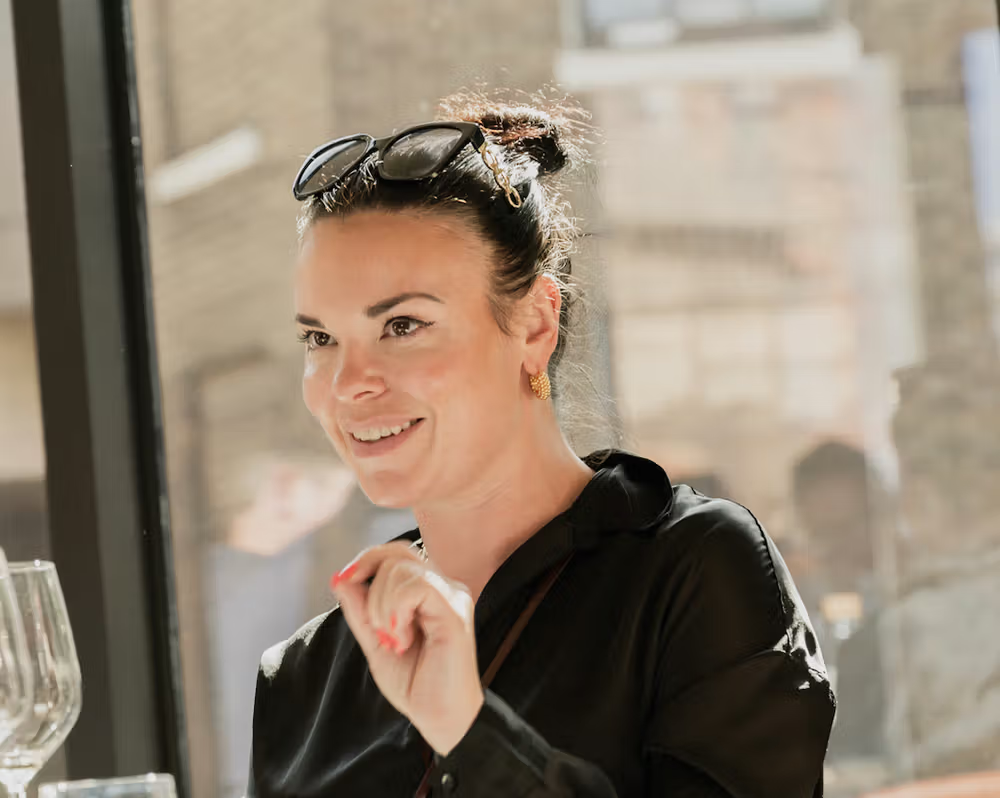
- Victoria Sharples, group head of wine at Fallow Restaurant.
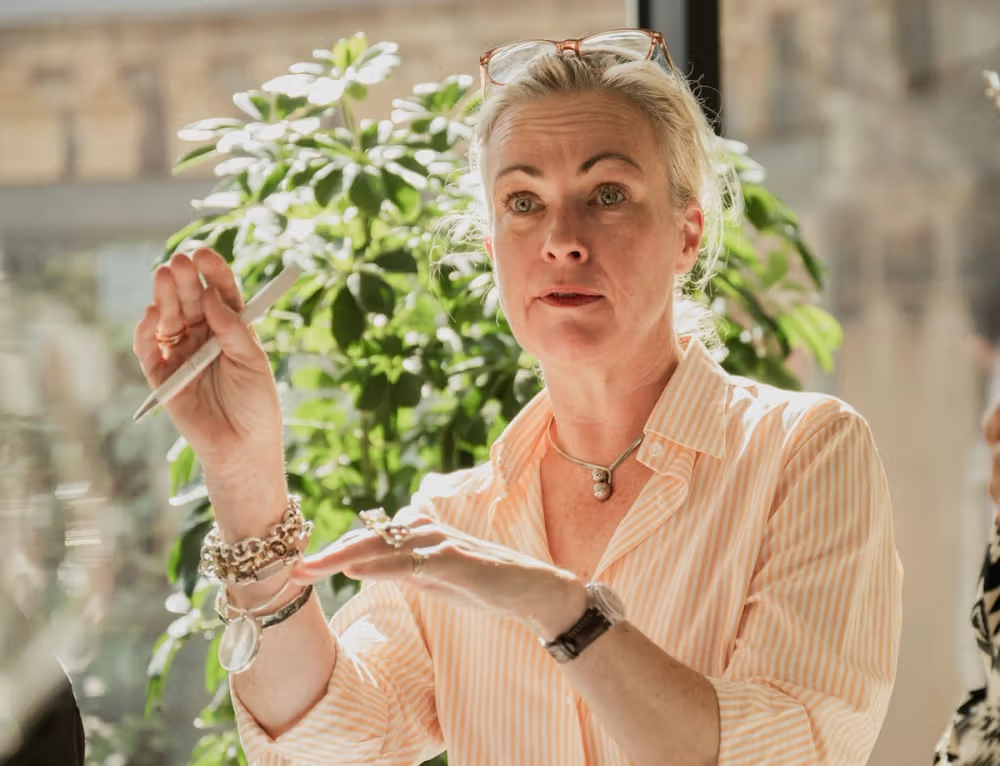
- Regine Lee MW, managing director, Indigo Wine.
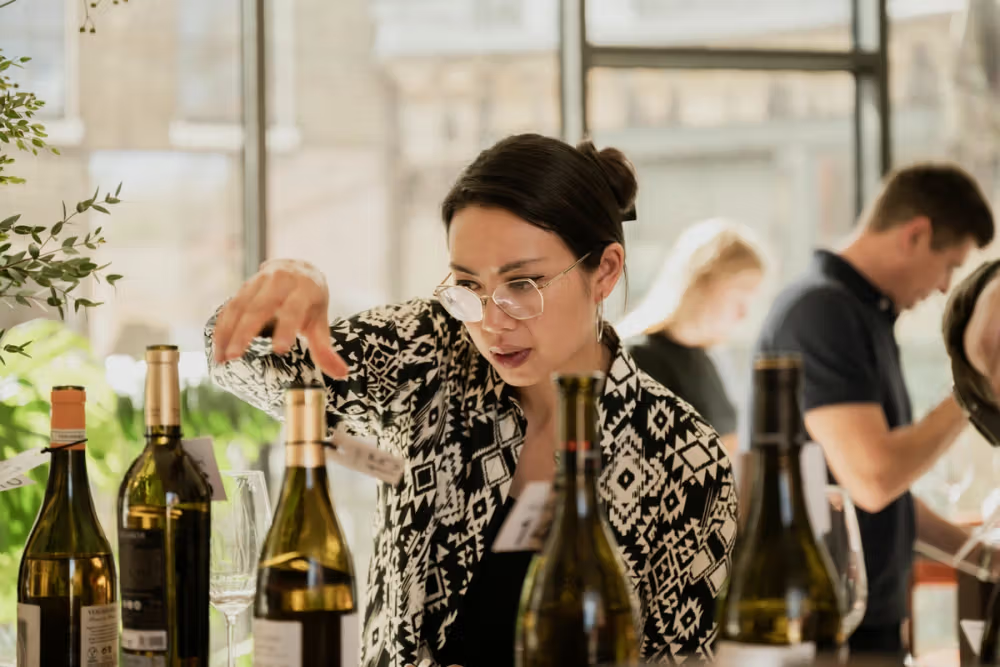
- Luis Gamiz Fernandez, Spain wine buyer for Indigo Wine.
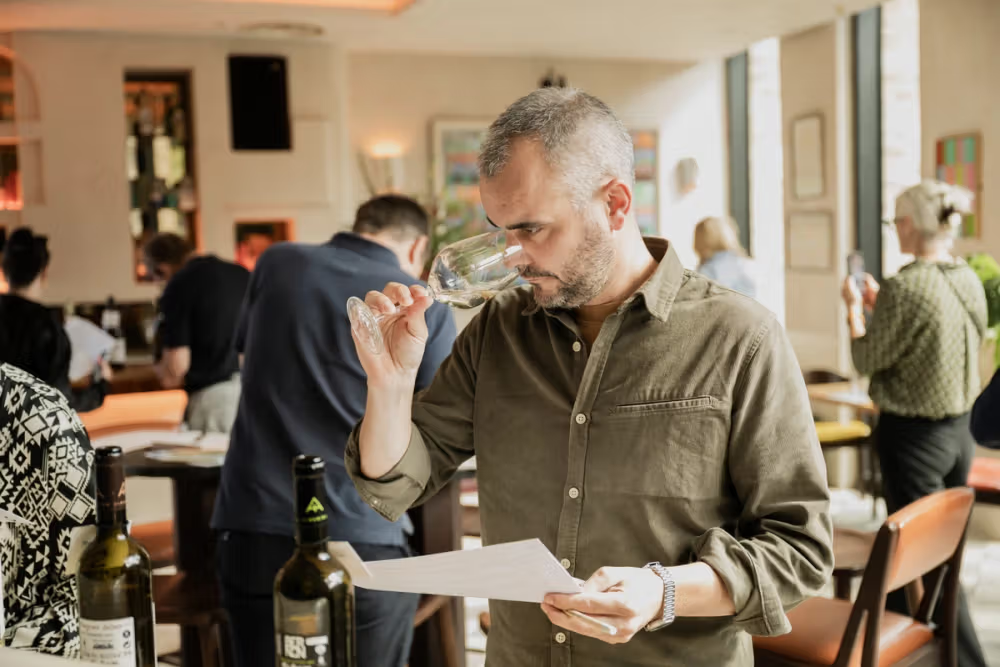
- Rafa Martin, group wine buyer for Harts Group including Barrafina, Bar Daskal and Parrillan.
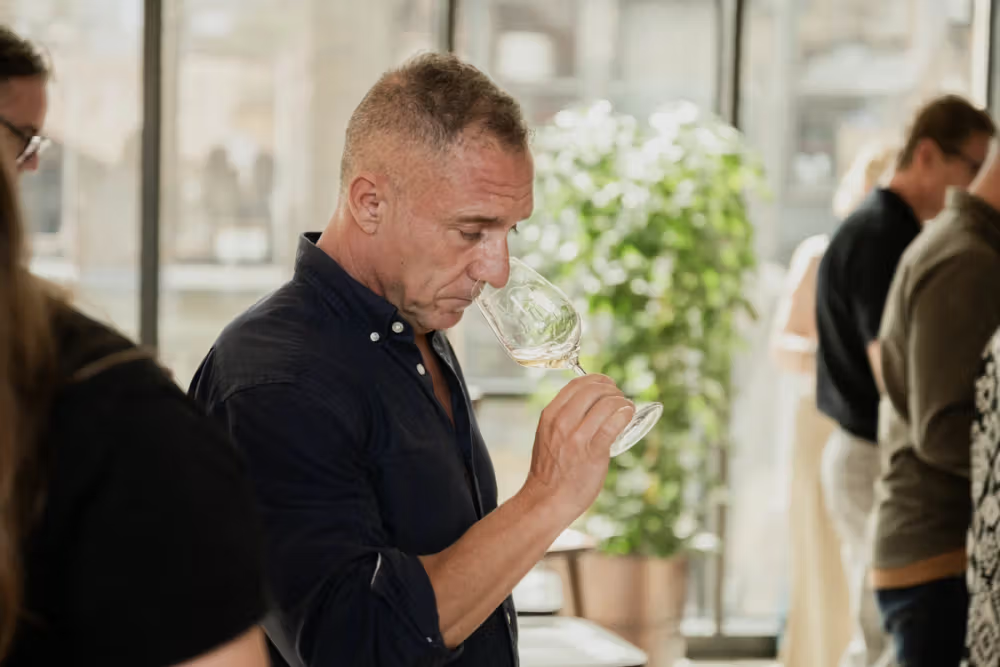
- Marc Patch, founder of GM Drinks.

Setting the scene
It’s perhaps not surprising that before the Rías Baixas DO was formally established in 1988, the region was actually known (from 1980 onwards) as La Denominación Específica Albariño to mark how important the variety was to the region.
It’s only right that the region believes it can live alongside the world’s other most well-known wine regions as it shares the same mineral-rich soils and cool climate that you find in France’s Loire Valley, Marlborough in New Zealand, and the Rhine Valley in Germany. A terroir that is perfect for Albariño that grows so well in its cool, wet growing conditions.
It is the combination of the Atlantic Ocean, high levels of rainfall and over 2,200 hours of sunshine that ensures Rías Baixas Albariño fully ripens with medium-to-high natural acidity that makes it both a crowd pleaser and ideal for top end restaurants and gastronomy.
Famous five

Rías Baixas has five separate wine regions
There are five main wine production areas in Rías Baixas each with their own micro-climate that differ by topography and proximity to the estuaries and the ocean. They include:
* Val do Salnés: closest to the ocean and therefore enjoying a wetter, cooler climate, this sub-region, known as the birthplace for Albariño, is the beating heart of the region, producing wines with more citrussy, saline characteristics.
* Condado do Tea: named after the Tea River this southern inland, hotter and drier region sits on the border with Portugal and is the second biggest sub-zone with hills and terraced vineyards and wines with a peachier, softer style.
* Soutomaior: this coastal sub-zone is the smallest in the region and is nestled in the hills at the head of the Rías de Vigo.
* Ribeira do Ulla: the newest sub-region (2000) is situated inland in the north and is called after the Ulla River that runs through it and makes a drier style of Albariño.
* O Rosal: the third largest sub-zone, lies on the southern coast of the region and is also made up of hillsides and terraces.
Buyers’ debate

Lea & Sandeman's Ophelia Hirst and Jeroboams' Peter Mitchell MW take part in the initial walkaround tasting
To help introduce the region and allow the buyers the chance to explore the wines, they were invited to take part in a mini walkaround tasting featuring producers who are working with D.O Rías Baixas Wines to help position and promote themselves in key export markets in the UK.
It proved to be a great way of opening the door to what Rías Baixas can offer.
“I thought the diversity was fascinating and far more than I was expecting,” said Richard Bigg. “It was a real revelation, particularly the wines with a bit more texture and lees ageing and these are all young wines too.”
Libby Brodie was intrigued to taste such a mix of wines, from what she described as the more “Pinot Grigio drinker” end of the market, through to the textured, lees aged wines that offered a completely different taste profile and might appeal to the more “Chardonnay drinker”.
Marc Patch said it was good to be able to see the “different steps” that is taking “Albariño to another level”.
Barrafina’s Rafa Martin said he is not surprised the wines performed so well as Albariño has become one of the big three “huge” wine brands of Spain alongside Rioja and Tempranillo.
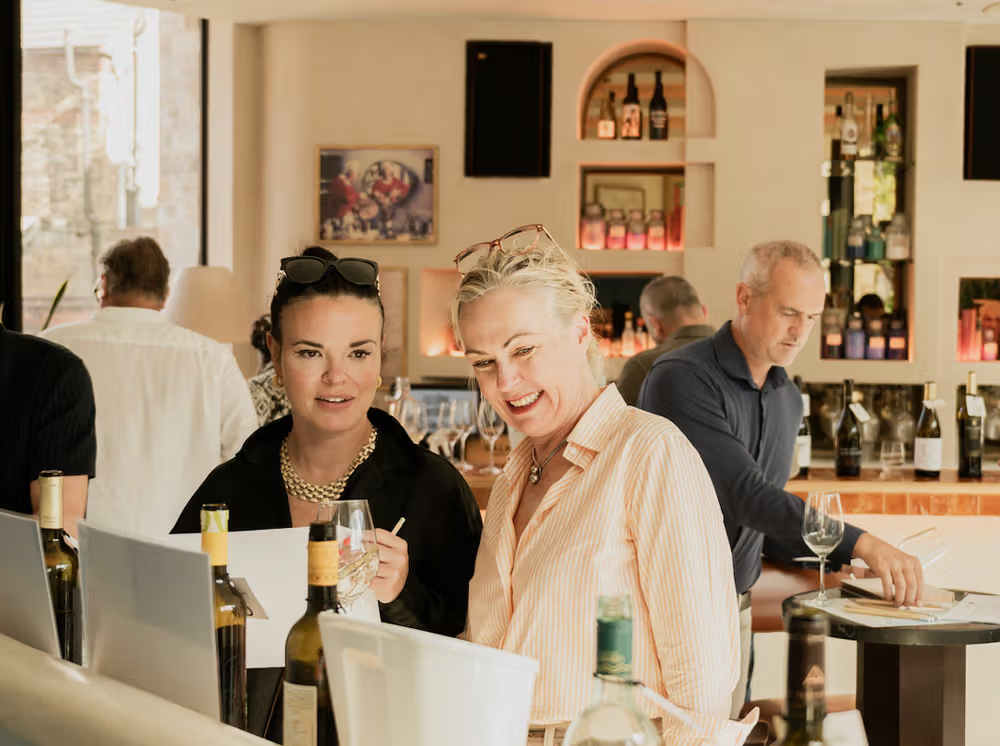
Libby Brodie and Victoria Sharples assessing the different styles of Albariño
Regine Lee said the quality of the wines on show was also not a surprise as Indigo Wine is having great success with wines from across Spain, including Rías Baixas,“which stems from the highly knowledgeable and sophisticated” buyers who are looking for “authenticity, indigenous grape varieties and looking for "new angles from traditional wine regions” and what she describes as the “new Spain”.
Particularly for producers that are “working in a holistic and low intervention way in their vineyards and cellar”.
Martin agreed and said key regions like Rías Baixas are benefiting from the “new wave” of Spanish producers and winemakers that are looking to make quality wines in a different, more interesting and market-focused way.
Ophelia Hirst said Lea & Sandeman’s customers were very much looking for what Spain and key regions like Rías Baixas have to offer.
“Spain is so exciting and educated wine drinkers are looking for new grapes and new things to try. Spain also, and Rías Baixas in particular, has the fresh, bracing mineral styes of wine that people search for,” she added.
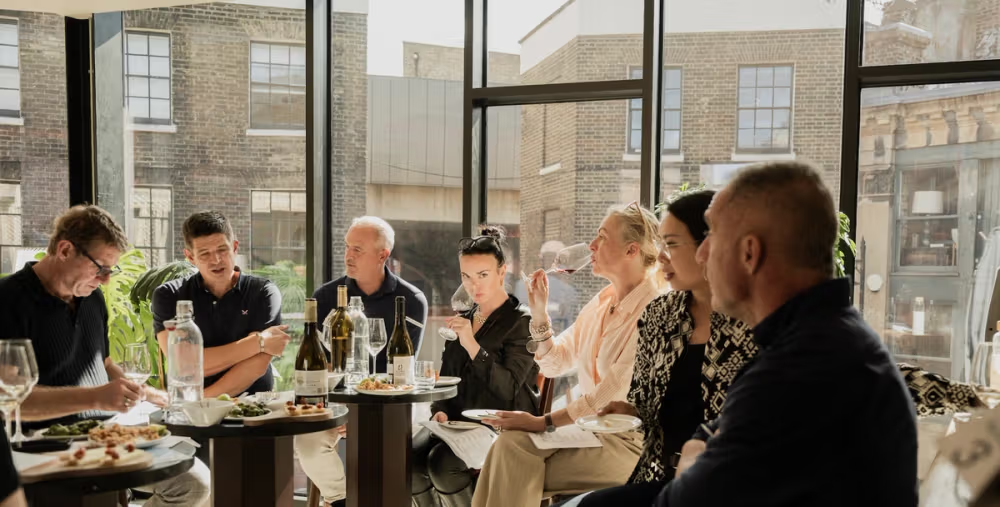
The panel featured a mix of importers, wine merchants, restaurateurs and wine writers
Peter Mitchell said the craze for Spain had yet to hit the more traditional Jeroboams’ retail consumer other than Albariño which “has grown considerably over the last three years”.
But it is a very different story for its wholesale business where Spain as a whole sits only behind France and Italy, driven mainly by Rioja, Cava, but also sees Rías Baixas as a “big growth area”.
He said it is fascinating to see the evolution of Albariño over the last 25 years and whilst it is still a “a work in progress” it is great to see there is still experimentation going on and producers “taking advantage of Albariño’s very thick skins and phenolics” to make what are now some “superb wines”.
“The one characteristic through all of these wines is the lovely acidity,” he stressed.
Bigg, who runs the specialist Spanish restaurant group, Camino, said it has been great to see how far Albariño has come right across the on-trade and where it is now quite common to see an Albariño listed “at the higher end” in a pub.
Easy and approachable
Victoria Sharples said it’s easy to see why consumers have fallen in love so much with Albariño. It’s easy to pronounce and say, they can associate where it comes from, being close to the sea, and it is “incredibly food friendly and incredibly drink friendly on its own”.
Libby Brodie said the styles of Albariño they were able to taste very much fit into the“light, fresh and food friendly wines” that younger consumers, in particular, are looking to try and how they would also work so well with vegetarian and vegan dishes too.

Indigo's Luis Gamiz Fernandez said Rías Baixas had succeeded in 'simplifying' its message
Indigo’s Luis Gamiz Fernandez said Rías Baixas DO deserves a lot of praise for really “simplifying” what it can do best and to shine the light fully on Albariño and all the fresh, easy drinking white wine styles it can produce. “It has made it easy for the consumer and ticks a lot of boxes of what they want to drink.”
Martin said it is the “freshness” in the wines that works so well in the on-trade and for a specialist Spanish restaurant group like Barrafina. Albariño and Rías Baixas is also “opening the door” for other Spanish white wines and regions, like white Rioja.
It means buyers and sommeliers like himself are able to introduce a far wider range of white wines - and even orange - wines to what was in the past a quite traditional Spanish restaurant scene. “People who like Albariño are now much more likely to try different wines from Spain,” he added.
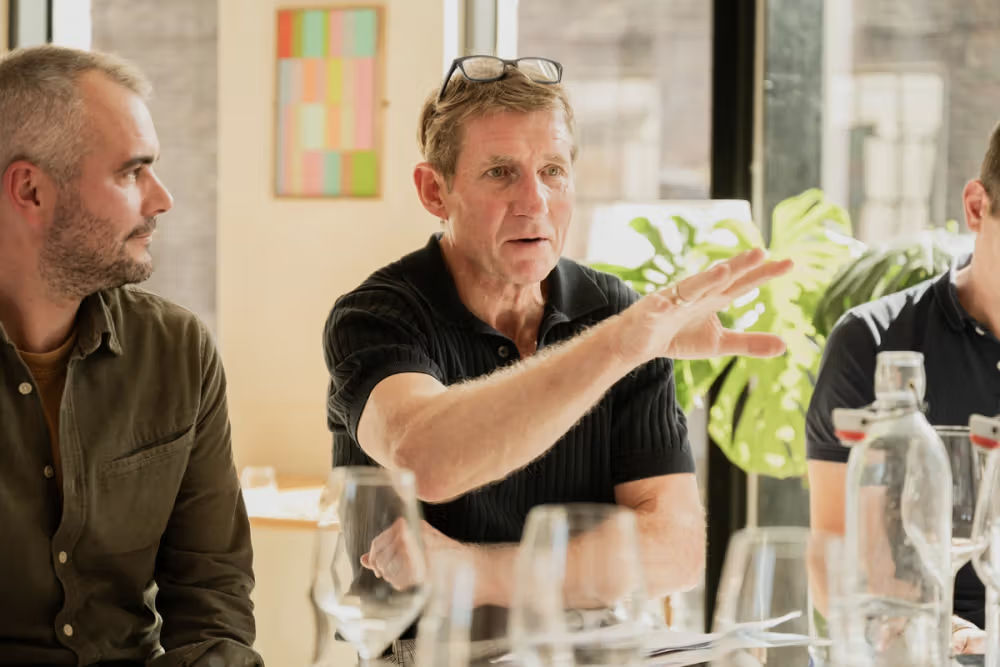
Richard Bigg is a passionate supporter of Rías Baixas and its wines
Bigg agreed: “I think Albariño is doing wonderful things for Spain in terms of quality and the fact you have to pay a little bit more for it as well.”
The panel also welcomed the fact so many of the bigger Rioja and major Spanish producers are now moving into Rías Baixas and buying up land and grapes.
“As long as they maintain the quality and not just see it as a commercial opportunity,” stressed Bigg. “It if is a serious Rioja house then why not?”
Patch said that is exactly what some of the big Spanish producers he works with - like Marques del Atrio - have done by investing in other regions and very much see Rías Baixas as their premium winemaking region and taking ideas and experiences learned there back to Rioja to help them make more premium white wines there.
Cross category appeal
Marc Patch, who works across all channels of the trade with GM Drinks, from independent convenience stores and cash carries to the premium on-trade, said the big advantage Albariño has is that its well-known - and liked - across all those sectors and can be enjoyed both with and without food. From entry level to super premium.
“It’s exciting and something different to, say, Pinot Grigio or Sauvignon Blanc. Versatility and people looking for the next thing is what customers want,” he said.
Brodie agreed and said it is the food friendly aspect of Rías Baixas Albariño that makes it such a must stock wine for whatever channel you are in.

Patch has also found with the major retail customers he is working with that they are having success with Albariño at different price points, from entry level to premium and are now actually looking to see how they can increase their range and build Albariño as a brand in their stores with their customers.
“It’s exciting and gives us more opportunity to do that rather than try and introduce a white Rioja, or a standard Crianza, or Reserva,” he added.
Fernandez also stressed the importance of the on-trade helping to develop trends for the main retail wine market. Particularly the growth in dedicated Spanish restaurants and groups, like Camino and Barrafina, where people get the chance to try wines and discover regions they would not be exposed to otherwise.
“We are all inter-linked in that way and what works well in restaurants we often then see a few months later on a supermarket shelf,” he said.
It is all about “having that extra time with the customer” said Hirst at Lea & Sandeman and the opportunity to talk to them and show them a bottle of Rías Baixas’ Albariño rather than just go for their normal Pinot Grigio.
“You build that rapport and then the customer respects your opinion,” agreed Sharples.
Duty friendly
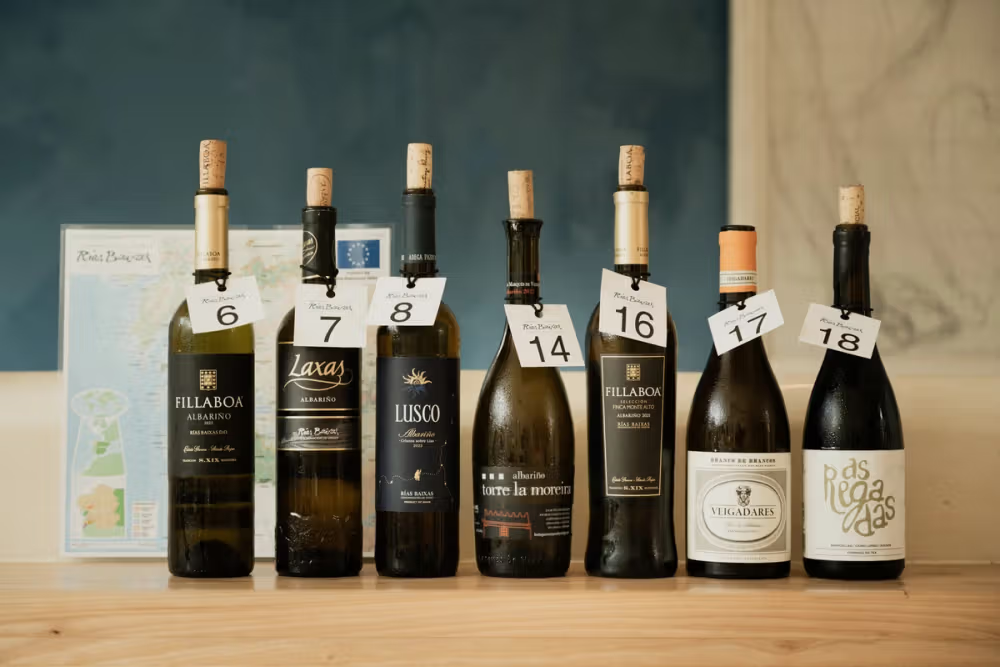
Rías Baixas offers a wide range of wines at lower abv levels

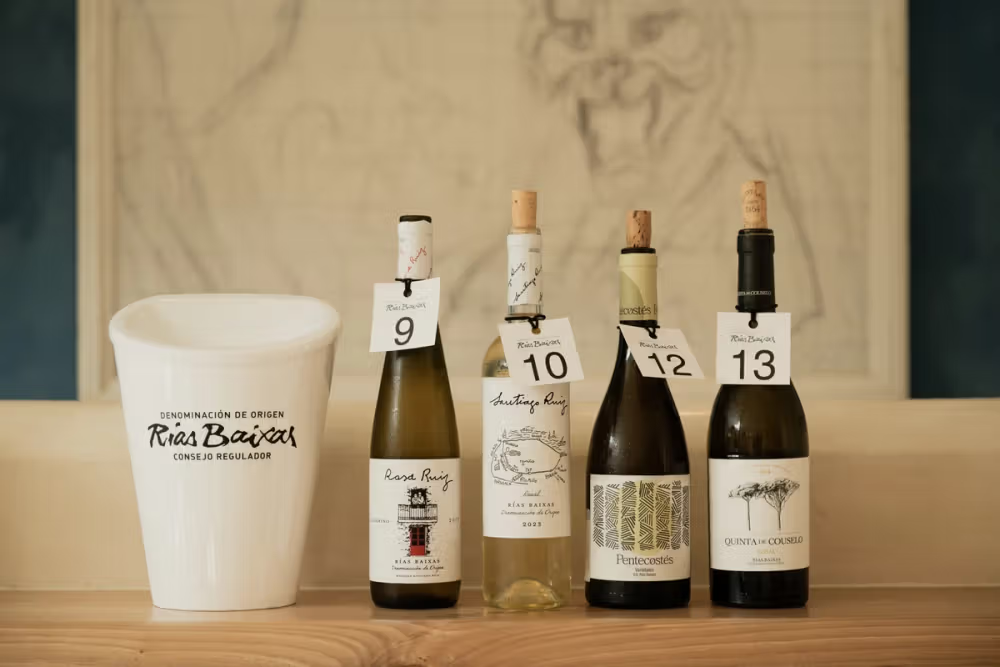
Albariño’s relatively low alcohol level - at around 12% to 12.5% - will also sit favourably within the new duty regime set to be introduced full time in February, added Patch.
“Buyers therefore have more confidence in it because they know they are not going to see it at 13.5% or 14% and cause them problems when duty goes up. So it’s in a good place. It’s interesting and consumers want to know more about it.”
Sparkling opportunity
The panel were agreed there is a big opportunity for Rías Baixas’ producers to look more at sparkling Albariño and take advantage of the continuing boom in sparkling wine sales.
Libby Brodie said she had been particularly impressed by the “excellent” sparkling Rías Baixas’ wines she has been able to taste and they very would much feed into the growing interest in more premium, but affordable and approachable wines from Spain. “I think it would definitely benefit the region.”
Sharples said there is also a chance to build on the success there has been with Cremant and premium Cava and the more “zero dosage, elegant, time on lees” sparkling that are doing so well in the on-trade and Albariño is well placed to do that.
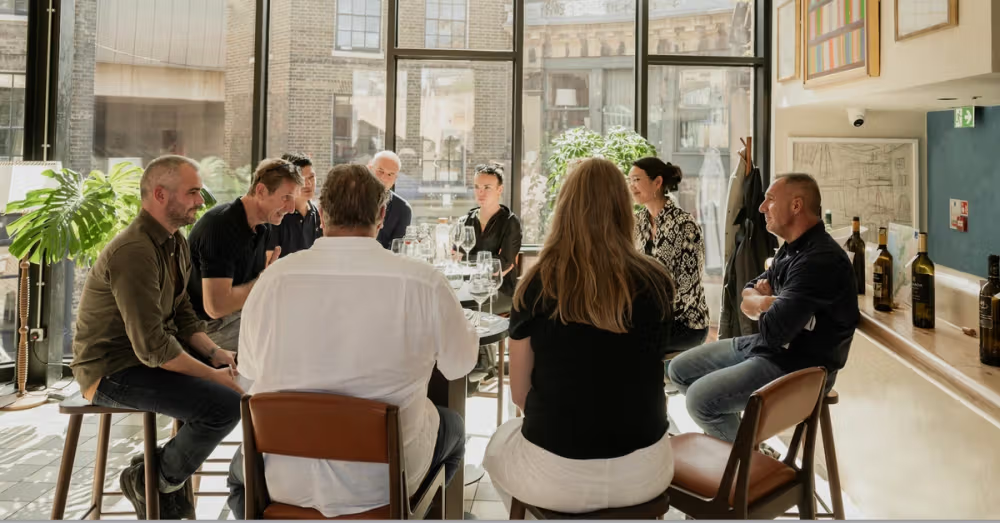
But producers need to be careful they don’t go chasing opportunities that might not be right for them - like putting a lot of time and energy trying to compete in the fierce world of entry level sparkling wine, warned Patch. The potential for sparkling Albariño has to be building on its already premium price position, he added.
Martin agreed but it would take time for, say, Barrafina customers to want to spend £100 to £150 on a sparkling Albariño. The quality is undoubtedly there, it just needs to build the market for it. “In time, I hope so!”
Premium position

The tasting and debate was also a chance for the panel to pair and see how the wines stood up to a range of Spanish dishes from Bar Daskal
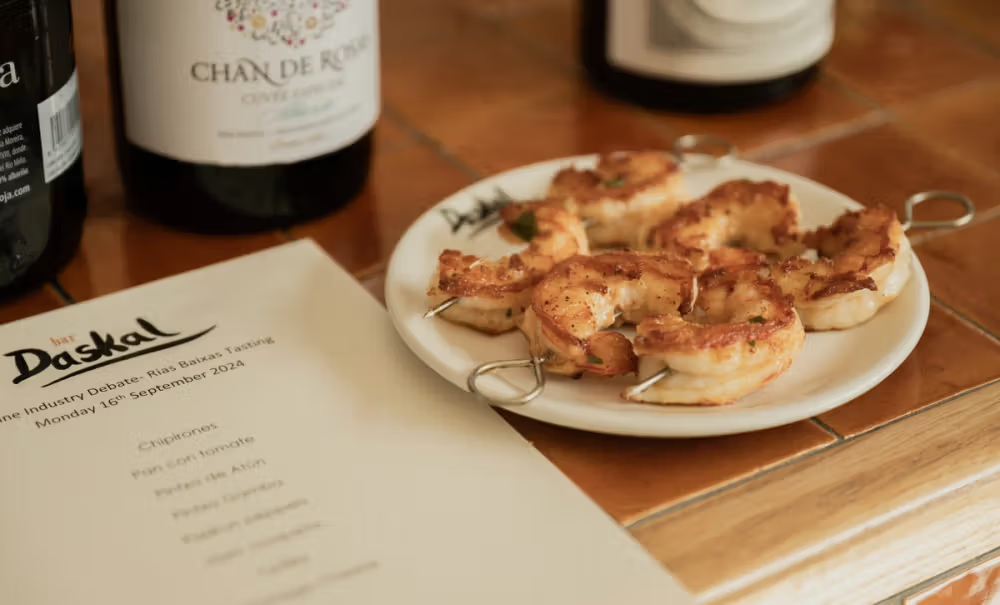
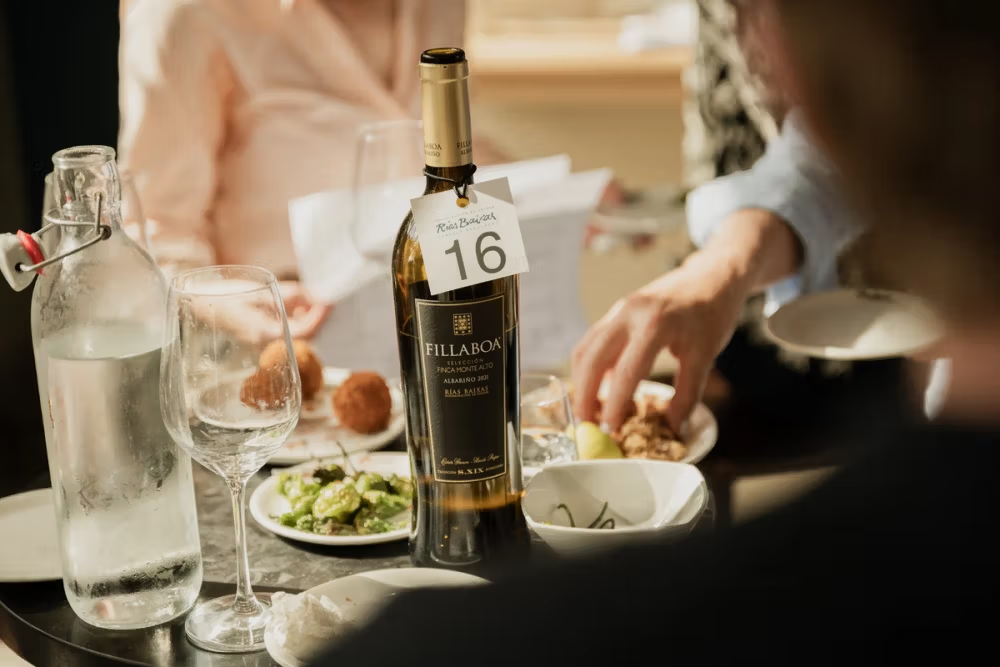
Bigg was keen to go back to the idea of Albariño being a brand in its own right and if that is the case then Rías Baixas has the opportunity to fully own Albariño’s branded status as its own. As the place you go to get quality, premium Albariño.
Indigo’s Lee agreed and said the edge Rías Baixas’ Albariños have over other white wine dominated regions, or styles - like Muscadet - is they can cover both good quality commercial wines, but also serious, premium price points too.
Mitchell said Albariño’s status as a premium wine has only recently been earned, but it is one Rías Baixas is grasping with both hands.
“Producers are now making premium styles every year and more are getting it right and sharing knowledge with each other.”
He wished all countries and regions making Albariño around the world followed Rías Baixas down the premium route as it is a “win-win all round”.
The panel also discussed the significance of promoting different sub-zones in Rías Baixas as a way of helping to push its premium image. It’s a delicate balance to get right as a lot of consumers might find that confusing, they agreed.
“Albariño can be replicated anywhere in the world. But you can’t replicate Val de Salnés and take it somewhere else,” added Fernandez who feels the region needs to have a long-term view about how it is going to stand out and position itself as a premium area and the “potential” it has.
Premium and fresh

There is also the opportunity, thought Brodie, to use the fresh image of its white wines to also put more focus on the admittedly limited supply of the fresh-style red wines it has too.
Bigg agreed and said it again shows what can be done with the region’s local varieties. “I think it is fascinating and the red wine we tasted was lovely. The weight of its. It is very atypical of a Spanish red wine in oak. It is very exciting.”
“That style is also very on trend right now as well,” said Hirst. “It’s exactly what people want. They are just so delicious and moreish and appetising with lower alcohols and higher acidity. It’s our role to try and remind people and teach them about these ‘other things’ from this incredible wine region.”
Fernandez said Indigo Wines has had good success listing fresh red wine styles from Spain, and particularly northwest Spain with varieties like Mencía you can find in Rías Baixas.
Patch could even see the major retailers looking at that style of fresh red wine from Rías Baixas on the back of the success of Albariño. It would, for example, fit nicely into say Asda’s new Wines of the World range, or Marks & Spencer’s Lost & Found wines that hope to introduce new styles and regions to their customers.
“But they have to over deliver and an Albariño red would deliver, over deliver,” he said.
Where next?
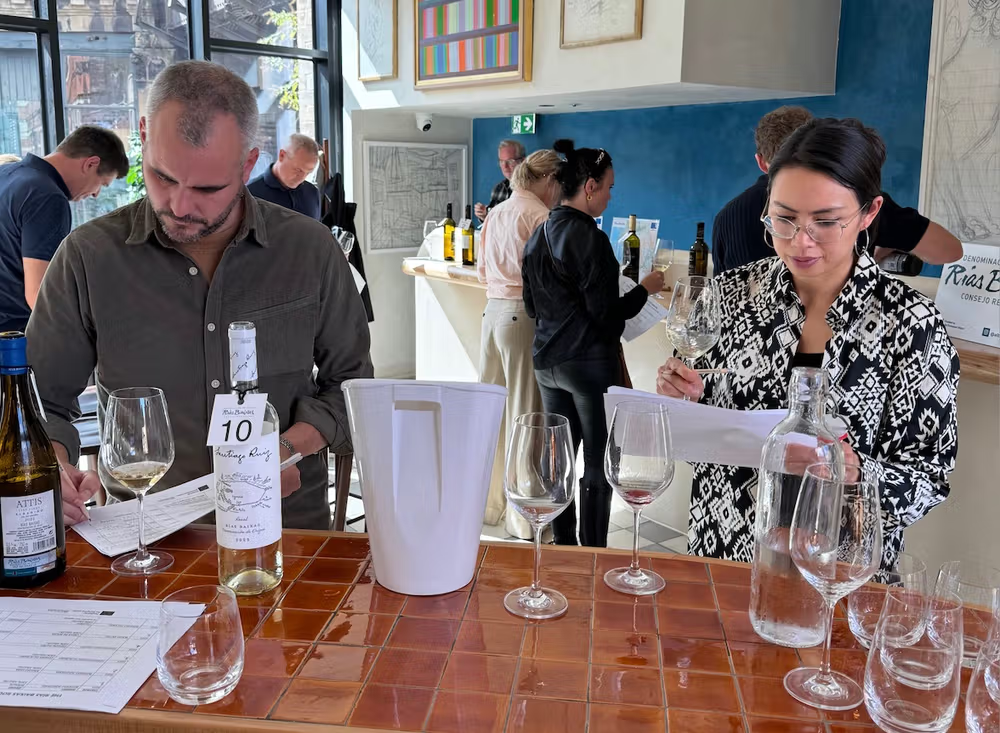
Inigo Wine's Regine Lee and Luis Gamiz Fernandez compare notes on the wines
The panel was agreed it needs to protect its premium status at all costs. To be seen as the region that produces the world’s best Albariños and not be distracted by the push to lower prices and sourcing from cheaper areas - or even swap out and be replaced by Alvarinhos.
Otherwise you risk being “just being another drink,” warned Sharples who said the market has got more than its fair share of sweeter-style cheaper Albariños from Rías Baixas and other parts of the world.
Instead, she argued, it is the blended Albariños where it should be focusing on that are a must for restaurants as they are so food friendly.
“As soon as you start blending and throwing in some lees and then suddenly you can do whatever you want with them and they become more of a foodie wine. I would stick with the lees and avoid too much oak. I also love seeing Caíño Blanco being used along with Albariño,” she added.
It’s the “six months on lees” style that Patch thinks the region should be focusing on if it wants to go to the next level.
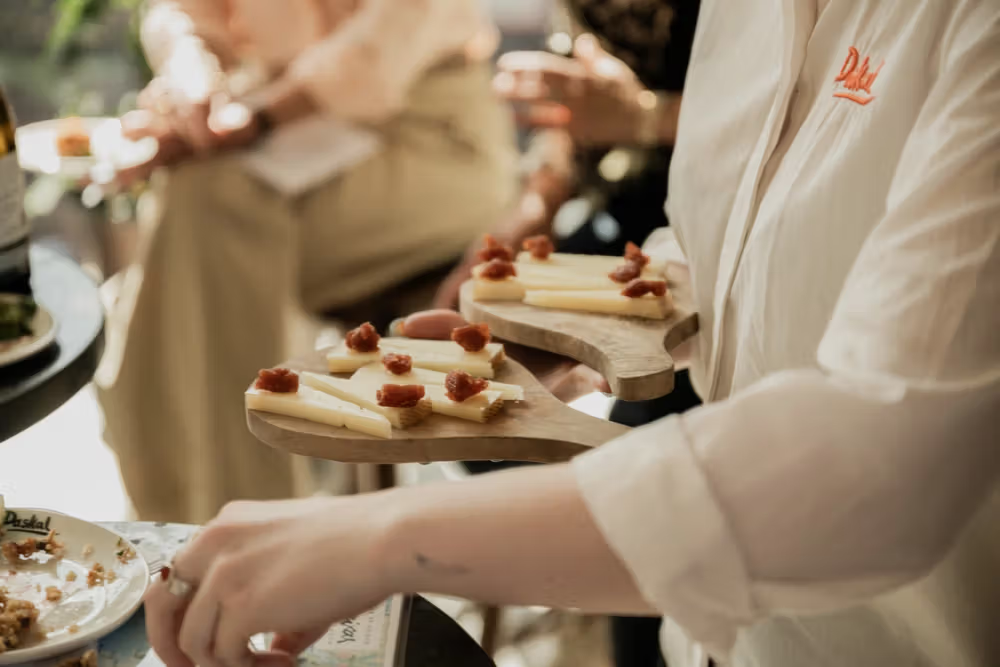
Indigo’s Fernandez believed, that in time, it does have the capacity to shine the light more on its different sub-zones as it looks to differentiate itself as a premium white wine region of the world.
He explained: “There is a reason why Spain does not have more space in fine wine as we have not been very good at marketing and explaining the regionality and selecting the best sites. You have a lot of potential in Rías Baixas that people will understand its municipalities and villages.”
Regine Lee said there is also the opportunity for some of the region’s producers to truly lead the way by creating what she calls the “Mondavi” effect and becoming cult producers that elevate Rías Baixas’s profile.
Hirst argued the region could also do more to promote itself as a premium tourist destination, particularly for those looking for great places to eat and drink - in much the same way that San Sebastián has done.
It is, after all, home to some of the best fish restaurants in Europe, agreed Bigg. “It is extremely drink friendly, but it’s also extremely food friendly too. It’s both. It’s brilliant and ticks a lot of boxes.”
He said he was also delighted to be involved in the debate and a chance to help Rías Baixas get even more engagement with the trade as the region, like the rest of Spain, needs to be far more on the front foot and “be proud of what it can do as a nation”.
He would also like to see more aged wines being held back and then brought into the market as that would help take its profile up to another level, particularly in the premium on-trade.
He summed the debate up perfectly by concluding: “There is some really serious wine out there. It is very, very exciting particularly if we can showcase some of the wines we have tasted today.There is Albariño - and then there is Albariño.”
Facts and figures
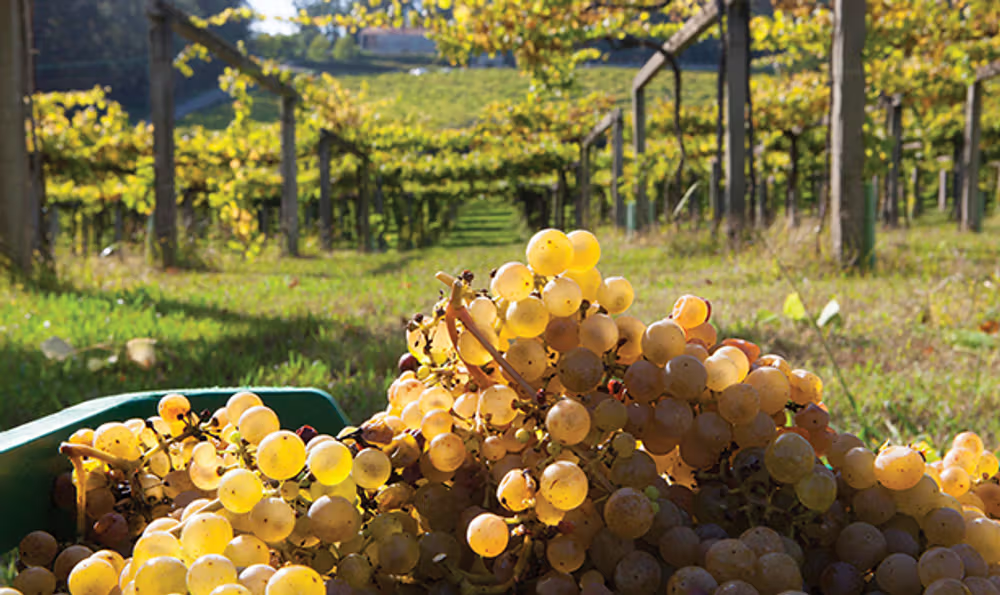
Here’s what you need to know about what gives Rías Baixas DO status:
- Albariño makes up 95% of its vineyards.
- These are the grape varieties permitted to be grown in the area:
- White: Albariño, Treixadura, Loureira (Loureiro Blanco or Marqués), Caíño Blanco, Torrontés, Godello y Ratiño Gallega.
- Red: Caíño Tinto, Espadeiro, Loureiro Tinto, Sousón, Mencía, Brancellao, Pedral y Castañal.
- There are 4,640 hectares under vine
- The region has more than 4,990 winegrowers and 23,731 vineyard plots.
- There are 178 registered wineries.
- 50% of its winemakers are women.
- Altitudes can reach up to 300m.
- Rías Baixas actually means lower estuaries in Galician and refers to the region’s four estuaries: Muros y Noia; Ría de Arousa; Ría de Pontevedra; Ría de Vigo.
- It has high rainfall of around 1,700mm per year.
* You can find out more about D.O Rías Baixas at its website here.
* In part two of our report on the debate we will hear directly from each of the panelists for their more detailed views on Rías Baixas and its potential in the UK.
